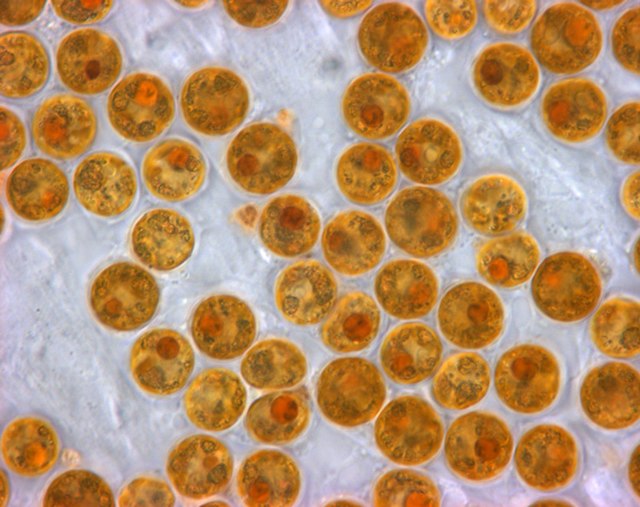Tridacna is a genus of large saltwater clams, marine bivalve molluscs in the subfamily Tridacninae, the giant clams. Many Tridacna species are threatened. They have heavy shells, fluted with 4 to 6 folds. The mantle is often brightly coloured. They inhabit shallow waters of coral reefs in warm seas of the Indo-Pacific region. These clams are popular in marine aquaria, and in some areas, such as the Philippines, members of the genus are farmed for the marine aquarium trade. They live in symbiosis with photosynthetic algae (zooxanthellae). Some species are eaten by humans.
Tridacna
Drawing of a Tridacna spp. (NOAA)
One of the two clam stoups of the Église Saint-Sulpice in Paris, carved by Jean-Baptiste Pigalle.
Tridacna crocea
Zooxanthellae is a colloquial term for single-celled dinoflagellates that are able to live in symbiosis with diverse marine invertebrates including demosponges, corals, jellyfish, and nudibranchs. Most known zooxanthellae are in the genus Symbiodinium, but some are known from the genus Amphidinium, and other taxa, as yet unidentified, may have similar endosymbiont affinities. The true Zooxanthella K.brandt is a mutualist of the radiolarian Collozoum inerme and systematically placed in Peridiniales. Another group of unicellular eukaryotes that partake in similar endosymbiotic relationships in both marine and freshwater habitats are green algae zoochlorellae.
Yellow-brown zooxanthellae
Cross section of the mantle tissue of a giant clam showing the symbiotic protozoa
A ciliate with green zoochlorellae living inside it endosymbiotically







